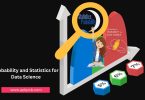Algorithms and data structures are the cornerstones of computer science and programming. Data structures are tools for effectively organizing and storing data in a computer’s memory. They specify how data is kept, accessed, and handled, which has an effect on the effectiveness and operation of software. Examples include arrays, linked lists, stacks, queues, trees, and graphs, each of which was created for a particular task or set of circumstances. On the other hand, algorithms are well-defined sets of instructions that specify how to carry out particular jobs or address particular issues. Data processing, calculations, and program flow control are all driven by them. Algorithms can be used for straightforward tasks like sorting lists or more difficult ones like looking through enormous databases or planning optimal network routes. For computer scientists and programmers, algorithmic proficiency is essential because it enables them to methodically and effectively address a wide range of difficulties. Understanding data structures and algorithms is crucial since it offers a number of significant benefits. It enables people to write effective code that satisfies the performance requirements of contemporary software by optimizing time and space resources. Additionally, these concepts offer an organized method for addressing a variety of computational issues, from route optimization to database searches, improving problem-solving abilities and code quality. One’s employment prospects are improved by knowing these ideas well because many tech businesses use data structure and algorithm assessments during the interview process. Furthermore, data structures and algorithms provide a strong foundation for handling complex computer science topics including distributed systems, machine learning, artificial intelligence, and cryptography. Their methodical approach to problem-solving and code optimization techniques are relevant to a wide range of real-world situations, from scientific research to web development. As a result, becoming adept with data structures and algorithms is not only advantageous, but also a necessary step toward developing as a flexible programmer. A tool like “Data Structures and Algorithms: Annotated Reference with Examples” proves to be extremely helpful along the way because it offers structured, thorough, and usable advice for beginners while also providing historical context and language-independent pseudocode to encourage deeper understanding and broad applicability.
You Cover These Topics
Linked Lists
Binary Search Tree
Heap
Sets
Queues
AVL Tree
Sorting
Numeric
Searching
Strings
Algorithm Walkthrough
Translation Walkthrough
Recursive vs. Iterative Solutions
Testing








